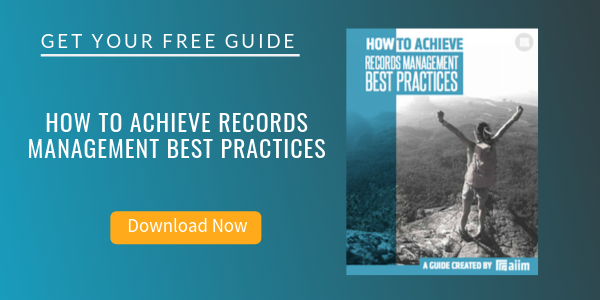How County Clerks are Stepping into the Future with Improved Operations
Electronic Records Management (ERM) | Automation
 For the past 3 years, the Clerk of Common Pleas Court in Clark County, OH, Melissa Tuttle, has been utilizing a content management tool to automate her business workflows. Like many Counties, Melissa and her team deal with a lot of paperwork and file types. Utilizing a content management tool has helped them eliminate the time-consuming burden of pulling paper files manually and instead utilize automation so that Melissa and her team can do their jobs better.
For the past 3 years, the Clerk of Common Pleas Court in Clark County, OH, Melissa Tuttle, has been utilizing a content management tool to automate her business workflows. Like many Counties, Melissa and her team deal with a lot of paperwork and file types. Utilizing a content management tool has helped them eliminate the time-consuming burden of pulling paper files manually and instead utilize automation so that Melissa and her team can do their jobs better.
“[Our content management tool] is not just a scanning tool, but much more…to help the workflow and integrations, and help us achieve our goals in running the court system.” - Melissa Tuttle, Clerk of Common Pleas Court, Clark County, OH
This county adopted technology over a decade ago to become more efficient. Yet, today there are many other counties in the US still struggling with manual processes and paper files.
With each state creating their own guidelines for public record requests, it's become a growing challenge for the clerk’s office to respond “as quickly as possible" to provide the requested information.
What Is Happening In Your County?
With an increasing number of requests each year, each county is faced with creating an efficient fulfillment workflow to avoid a significant backlog of requests. The mismatch between the increasing number of requests and the staff available is not the only barrier a clerk faces. A record request can be challenging with the need to hunt for paper documents through multiple departments and file cabinets – putting the burden on the government staff and creating lengthy fulfillment cycles.
By automating the requests with eforms, automated workflows, and electronic searches for their digitized records – County Clerks can experience a number of benefits, including:
- Instant Capture – Records are captured, indexed and stored immediately through scanning, electronic forms or archiving emails and attachments.
- Central Electronic Storage Location – Offsite storage and physical file cabinets are eliminated. In addition to the storage benefits, keyword and full-text search enable users to find the specific electronic documents quickly and easily.
- Go With Online Requests & Automate The Process – Constituents expect a quick turnaround for their requests – starting with an online form vs. a paper form. By moving to a web submission process, constituents can make requests from anywhere, at any time and clerks never lose a request. They can route the request for immediate attention and track the electronic workflow.
- Reporting Dashboards – With data available for review, users can identify bottlenecks, better manage tasks, and zero in on reasons for slow fulfillment.
 What About a Record That Is Too Old and Only Available As Paper?
What About a Record That Is Too Old and Only Available As Paper?
The key benefit to digitizing records and automating workflows is the time that is saved executing the same task – from a manual process to an electronic process. By automating manual tasks, staff can redirect to other tasks that need their attention instead. So, for requests that need very old records that are not digitized yet or are planned to remain as paper – staff in the office have the time to hunt down their rarer requests. In Duval County, FL – this meant responding to a request in less than 24 hours versus seven working days.
Best Practices Mean Planning For Disaster
When it comes to a digital transformation, government offices are charged from the federal government on down – to utilize electronic records. Not only from the practical sense of providing better constituent services, but also to protect their history and important records from falling prey to a natural disaster. We have seen it with unpredictable hurricanes, violent tornado seasons, and surprise flooding to areas of the country that have never been underwater before. The night before a destructive event is predicted is not the time to worry about paper records.
Planning For The Future
Small counties to large counties need to think and plan about their operations and look for more efficiency. We demand it in our homes and we demand it of our government. We have seen cities and towns build the road map for change – recognizing the need to digitize – understanding the value of reducing tedious work and leveraging their information access for better information sharing – within their counties and for their constituents. The time to consider a change in government options is now – when technology can make the clerks’ offices operate more efficiently.
About Joanne E. Novak
Joanne is a program manager at Konica Minolta Business Solutions U.S.A., Inc. (https://kmbs.konicaminolta.us/kmbs/information-management/enterprise-content-management) and is responsible for program development with the company’s Business Intelligence groups, including the Enterprise Content Management (ECM) practice. Her responsibilities are to build sales and customer-facing educational and thought leadership insights as well as strategic initiatives for ECM.



